Oberheim has returned to the synth market with an epic bi-timbral polyphonic analog Synthesizer, the OB-X8, here is my review
Some synthesizers are magical. Instruments you stand in front of and just say, wow, and where the first play is a true life experience. This is especially strong with synths and other instruments where the developer is a legend and created that thing.
That’s exactly what I had at Superbooth 2022 when I briefly played the new Oberheim OB-X8 polyphonic analog Synthesizer. So I was all the more pleased that Sequential/Oberheim contacted Synth Anatomy to test the OB-X8 more closely. For three weeks, I could say that I owned this epic instrument. Unfortunately, the device then had to move on to the next reviewer.
(DRAFT)
Disclaimer
I was born in the 1980s, aka the millennial generation, and only got involved with the Synthesizer subject later. Vintage synths were, therefore, never really a topic for me. Too young, sorry. I did my first steps with new synths as vintage is out of my budget, too error-prone, and more.
The Oberheim OB-X8 was the first Oberheim synthesizer I worked with for a long time. Especially in real life in my small studio. Therefore, I will not make any mega comparisons in the review of how good or bad the Ob-X8 is versus the SEM, OB-Xa, etc. Since I have never dealt with the devices in real life, it makes little sense. Even with the help of YouTube videos, it is of little use since the sound has compression on it, which affects the quality. I tested the instrument as my first Oberheim Synthesizer. Enough, let’s start with the Oberheim OB-X8 review.
Look & Feel
I’ll spare you the unboxing photos as the box has already been opened several times. The more important thing is how Tom Oberheim’s first synth in 40 years looks and feels. You will find out about its massive construction as soon as you unpack it. I rarely had such heavy packaging. At 40,5 (L) x 16.67 (W) x 5,87 (H) and weighing 14,74kg (32.5lbs), the Oberheim OB-X8 is not lightweight.
The synth consists of a high-quality aluminum design with real walnut end cheeks. Yes, a hand flatterer. But to be expected at a price of over €5000. The legendary Oberheim logo is emblazoned on it as you know it from the past. Just beautiful.
In terms of color, the instrument is strongly reminiscent of the mighty OB-X with its black and gray look. Processing is at a very high level.
The knobs, as well as the buttons, are of perfect quality. The knobs are a bit too tight and stiff, in my opinion, but vintage synth lovers might like that. I prefer good potentiometers that just glide like creme through parameters. The iconic pitch and mod controls were a bit spongy for me. I don’t know if that’s intentional, but to me, it wasn’t at the same high quality as the rest of the unit.
It could also be that the demo unit has been through tough review times. Maybe it went through the hands of hardcore prog rock shredders. Who knows? The keyboard is a 61-key FATAR velocity and aftertouch keybed. That fits perfectly and feels solid—nothing to criticize.
Okay, at $5000+, you would have liked a polyphonic aftertouch keybed but you can’t have everything, and at the time of the development, it wasn’t available yet from FATAR (hey, Waldorf Quantum Mk2).
Connectivity
On the connection side, the OB-X8 offers more of a classic selection. You get a USB connection for MIDI data transfer and firmware updates, a classic MIDI interface with in/out/thru sockets, and a wide range of audio inputs and outputs.
There are ins for the sustain, volume, filter, and arp. On the right side, you have left/right for stereo and a mono output. The OB-X8 is a bi-timbral poly analog synth with 8 voices. Too bad you don’t have dedicated outputs for each layer. But there is a mode in the firmware where you can split the voices and pan them to the left and right sides. It’s not quite perfect, unfortunately.
On top, it hosts a headphone output on the front of the device. I find that very positive, so you can connect headphones quickly and easily without running long cables.
Classic Analog As Its Best
Now let’s go to the big element of this Oberheim OB-Xa review, the sound engine. This is fully analog, has 8 voices, and is bi-timbral. But this is limited to 2 x 4 voices patches. The possibility of assigning the voices freely on the layers is not possible. Perhaps at a later date of the firmware.
The engine consists of 2 oscillators, a mighty multimode filter, two envelopes, and a real LFO. Another modulator can be used, like an LFO, but more later. No multi-effects processor and no sequencer but an arpeggiator. Effects would have been a nice addon to round off the sound, especially a delay.
Oscillators
Two discrete SEM/OB-X “lineage” VCOs per voice generating sawtooth, pulse, and triangle waves form the heart of the OB-X8. These are classic oscillators but with some small improvements—nice goodies but not groundbreaking new. You can select them at the push of a button and set the corresponding frequency with dedicated knobs.
A nice addition are the two different square waves allowing you to match it to the OB-X/Xa or OB-8 level characteristics. Thus, you can create patches much closer to the original vintage units. Then, you can dial in the pulse width of both pulse waves simultaneously using the pulse width knob or independently on the setting page 2. The latter is one of the improvements to vintage synths
There is also an oscillator 2 to oscillator 1 hard sync option. By mapping the filter envelope to the frequencies via the shortcut in the oscillator section, you can achieve these iconic harmonically-rich razor-sharp sounds. Not to forget, you can also cross-modulate OSC1 by OSC2’s sawtooth wave. This allows you to drift into the FM region and elicit experimental sounds from the OB-X8. And a noise generator is hidden in the mixer section for additional sound design possibilities.
Setting Page 2 Dilemma
With his first synth in a long time, Oberheim has created an instrument that stands for fun, hands-on analog synthesis. The important page 2, however, casts a shadow over the synth, as many modern features (41 in total) are hidden here, including the mixers and parameters for tweaking the pulse width individually.
Adjusting individual parameters is fun on the interface, no doubt, when you go to page 2, you have to scroll through the menu with 41 entries, which makes programming a bit less attractive. I would love to see some extra control options right on the interface to ensure better live tweaking. There is no lack of space on the synth.
On the other hand, you have to see the concept of the OB-X8. It follows the design of old 80s analog poly synths, which were all very tidy. If the interface had been paved with knobs, this charm would also be gone. Page 2 is not a great feature, but it is a compromise that the developers made. I’m not a fan of it.
In Action
The “Oberheim” character can already be seen in the power of the oscillators. It sounds broad, floating, creamy, and very warm. You press a key, and you trigger a wall of sound. The oscillators aren’t the most varied, that’s a fact. They offer relatively simple subtractive synthesis. Features such as dual PWM, cross modulation, or hard sync, however, can be used to generate more complex sounds.
Certainly, a musician does not buy the OB-X8 with the expectation of getting the deepest oscillators, but mainly for that Oberheim sound. And the oscillators do this job perfectly. The extra goodies make them deeper than any Oberheim synth so far. You can find out more about the oscillators here in the linked in-depth video.
Part 2 of the Oberheim OB-X8 review will be coming soon.
Filter
Modulations
Playability
Summary
Pro
- classic analog synthesis at its best
Neutral
- price
Contra
- second screen parameters
Oberheim OB-X8 is available now for 5399€/$4999 USD.
More information here: Oberheim
Available at my partners
Thomann
Perfect Circuit Sweetwater Hardware Reviews

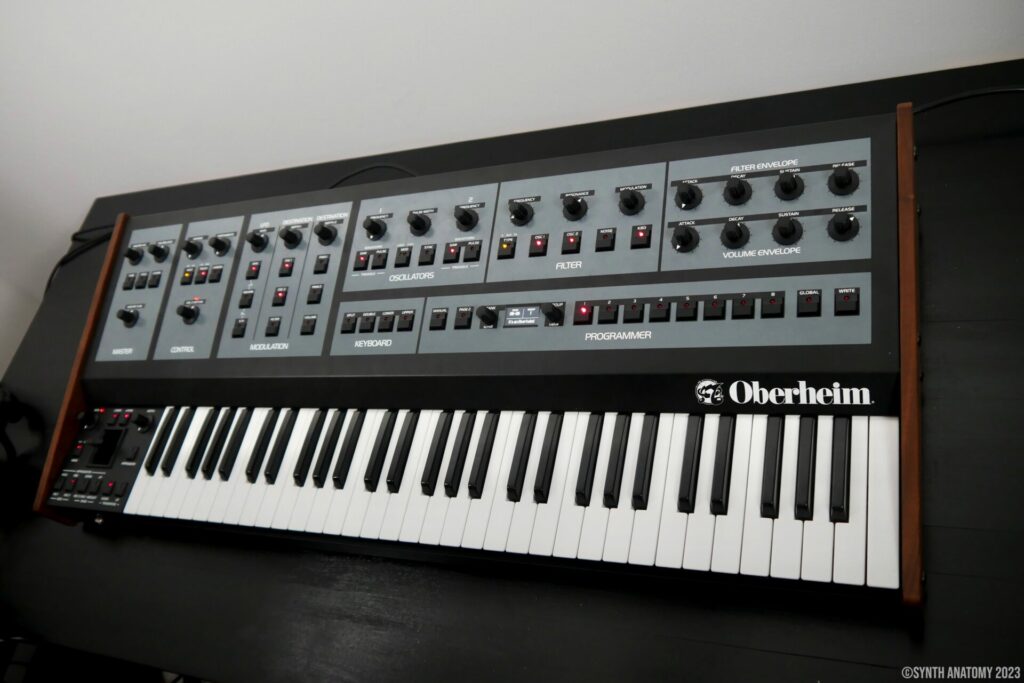
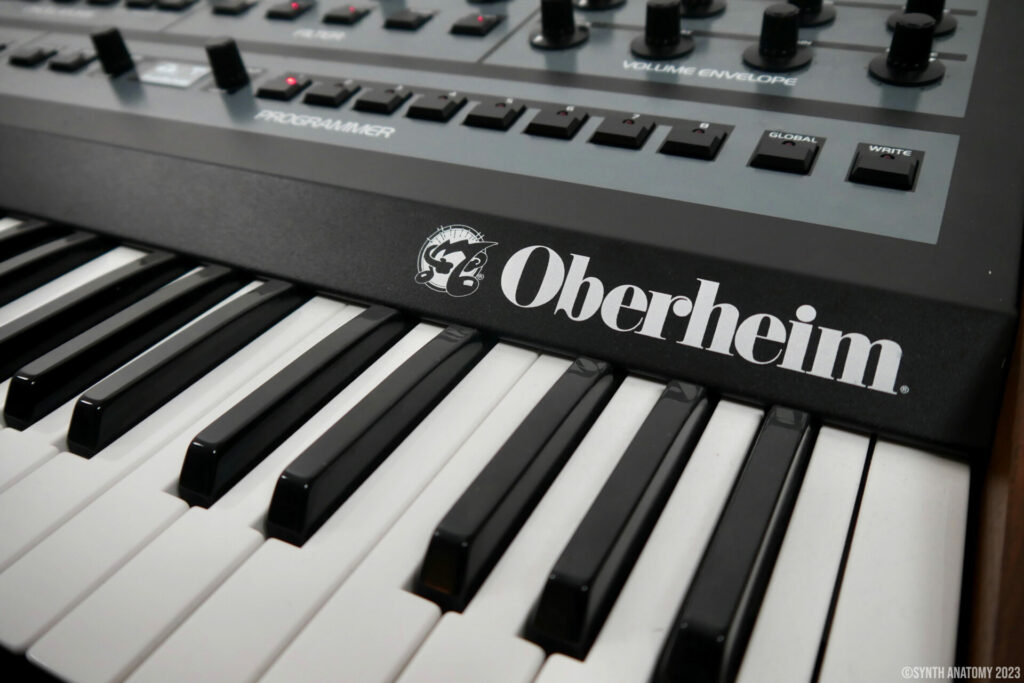
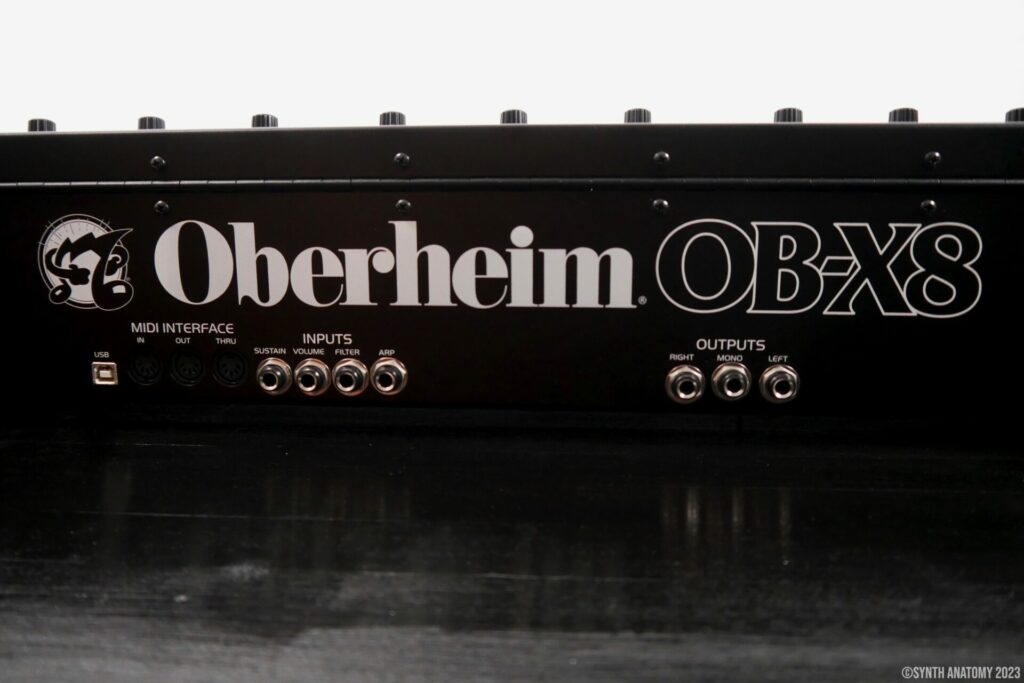
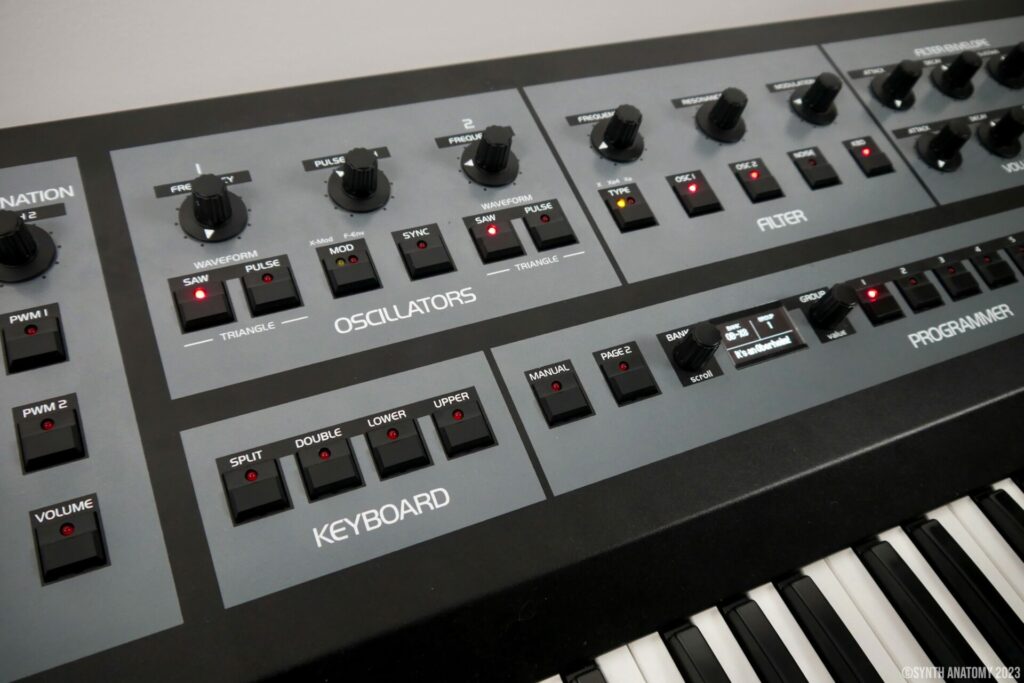

 Oberheim OB-X8
Oberheim OB-X8
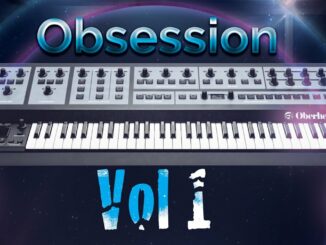
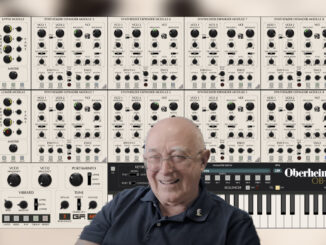

Once all the fanboi hype has died down I think this will be seen for what it really is: An overpriced dud. It should have twice as many knobs for a start. The ergonomics are awful. It does nothing to advance the synth world. The design is as obvious and boring as mud.
Ohhh life is hard on you Jean?
This synth is basically 4 classic Oberheims under one hood. It’s not pretending to be ANYTHING else. It’s also far from a dud. Been selling like hotcakes, and will continue to.
MR. SYNTH
Seems like a missed opportunity. I don’t mind a single display so as it is sufficiently large enough to provide relevant information and this is simply too small, and I must concur the ergonomics are awful. Regardless of how this may sound, thoughtful design features must be part of the process, not at afterthought.
It’s a masterpiece. The originals did not have displays at all.
Sounds fantastic!
This is meant to be legacy, not a new synth. The purpose was to built an Oberheim combining the legendary OB-8, OB-X and OB-Xa into one instrument.
Of course they wanted to keep the panel design as close as possible to the originals. It was never the point of bringing forth a brand new instrument. On the contrary, they did everything possible to build against the plans and designs from yesteryear. That is the concept of this machine.
This, 100%. I’m fortunate enough to own an OB-X8. Yes the page 2 menu is long, yes the lever box has limited use, and yes the synth engine is limited, but day-um, it is one heck of a synthesizer. While not without it’s pain points, it’s an absolute joy to use and sounds beautiful. The goal was to bring the classic OB back to market, and I’d say they have succeeded with flying colors. If you need more features in a smaller package, there are plenty of other options. This is the golden age of hardware synthesizers after all.
I appreciate the notes about the paddles being spongey and the knobs stiff, I hadn’t heard that yet. I felt the same about the knobs on the Prophet 5 v4, I’m not really sure why people like it that way unless your hands bump into the wrong knob a lot.
I always thought the OB series knob layout was too much of a compromise, especially as they got more sophisticated in features. I think it would be cool if Sequential and Oberheim made next generation “remakes” of the Prophet 5 and OB series, but dispensed with keeping the design quite so honest to the original. Like they could add a mixer to the OB, or an alphanumeric display to the P5. The new features they DID add like split/dual and aftertouch are great but not necessarily very easy to access.
Disagree. The rev 4 & obx8 are great the way they are. I don’t want modern features on these.
I deleted the last two comments!
Be friendly with each other and give input that helps everyone. If you want to be the bad guy, go bang around somewhere else.
Such comments will be deleted. It goes up to a ban!
“A battleship is a large armored warship with a main battery consisting of large caliber guns. It dominated naval warfare in the late 19th and early 20th centuries.” (Source: Wikipedia)
They should have called it USS Oberheim!
Quote: “In terms of color, the instrument is strongly reminiscent of the mighty OB-X with its black and gray look. Processing is at a very high level.”
What does “Processing is at a very high level” mean? Processing what? What does the author mean by using the term “processing”?
built quality!
4 classics under one hood, and sonically 100% accurate to those originals.
Build quality is excellent of course.
Pricey, but well worth it.
MR. SYNTH
I’ve owned all the classic “battleship” OBs: from 4-Voice SEMs an OB-X 8-voice, which is now in the EMEAPP museum, to multiple OB-Xa and OB-8 to a Matrix-12, so would love to hear this new incarnation. These are not meant to be do-all workstations, so I am glad that the new machine stayed with the classic layout. This is a modern day homage to machines that are now very expensive and not reliable for the non-service tech player to own. And although $5000 is alot of money, remember these machines were about the same back in 1980! Carry that forward for inflation and they would be almost $20K today, so in that respect, a bargain. And no more crappy Pratt-Read keyboards…that is huge, as they were always breaking J-wires, and later those rubber carbon contacts when they went to Matushita.